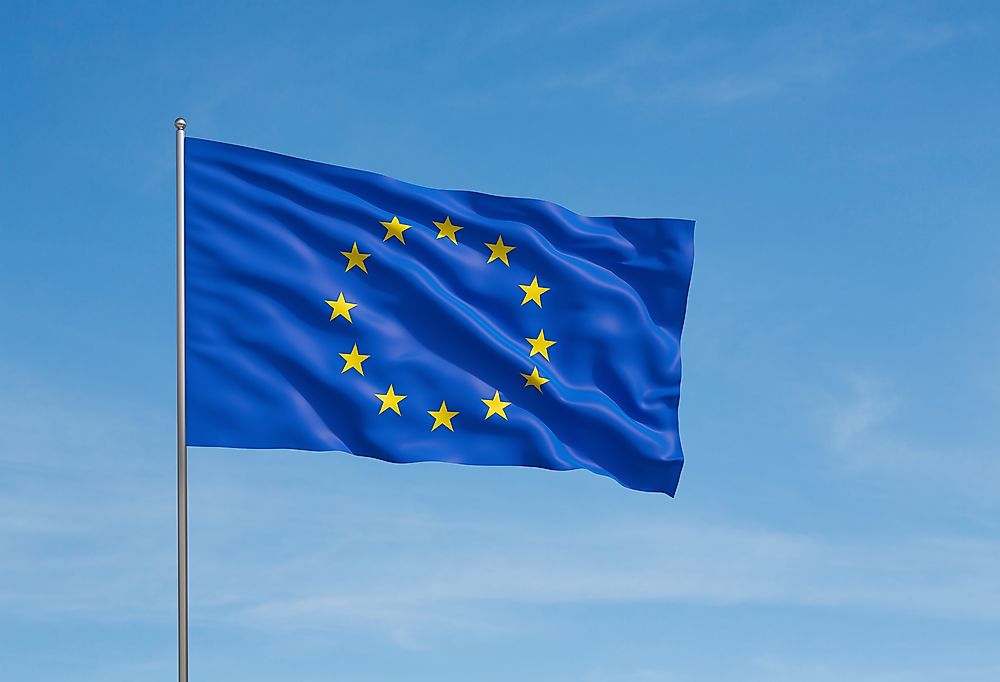The EU is preparing to launch its own blockchain solution to authenticate physical products through NFTs. The technology can be used to fight counterfeit products but has many other use cases as well. The tokens are compatible with regular NFT platforms and will be tied to the EU's own blockchain services infrastructure.
To the public at large, blockchains and NFTs are often associated with volatile coins and expensive JPG files.
However, beyond the major headlines, many projects in development put this technology to use in novel ways.
The European Union recognized this potential several years ago. In 2017, the European Commission started exploring options to use blockchain technology to combat online piracy and counterfeiting. Today, more than half a decade later, this vision is about to become reality.
In 2018 the European Commission and the European Union Intellectual Property Office (EUIPO) launched their first 48-hour “blockathon,” which aimed to develop concrete projects. With the help of talented developers, this resulted in a project that will help to fight counterfeit products.
Fast forward four years and the EU’s blockchain-based anti-counterfeiting solution is about to see the light of day. In a recent update, EUIPO’s Claire Castel informed the World Intellectual Property Organization that a live version of the project should be up and running soon.
EU Anti-Counterfeit NFTs
In basic terms, the anti-counterfeiting blockchain allows manufacturers to create unique tokens for all their products as proof of authenticity. This record is kept on the blockchain and can be transferred to others if the underlying product is sold.
These tokens are “non-fungible,” better known as NFTs, and can be kept in a regular blockchain wallet. The EU sees them as unique “digital twins” of a physical product that signifies proof of legitimacy and ownership.
“The record on the blockchain is a unique and immutable token. As goods pass from one party to another, the token is exchanged between digital wallets. The combination of a unique product identity and the continuous transfer of the digital identity between wallets creates proof that the goods are genuine.”
“Along the journey of a product, customs and other enforcement authorities can access information, such as authentic shipping records, which can support risk assessment,” Castel adds.
The EU sees many benefits of a blockchain-based solution. The unique NFTs make it easier for consumers and enforcement agencies to authenticate products. However, the NFTs will also help with product recalls, and allow manufacturers to communicate directly with consumers over the blockchain.
“Since the right holder defines what type of data is included in the digital twin, it could also lead to a targeted loyalty program based on product specifications,” Castel notes.
Open and Compatible
The EU initiative aims to be open and compatible with the broader NFT marketplace. Brand owners can choose their own NFT platform, for example. However, the EU blockchain services infrastructure, which is currently being developed, will have a central role.
“The solution will introduce a common language in order for track-and-trace providers, NFT platforms and logistics enterprise resources planning (ERP) to collect and share proper data for anti-counterfeiting operations.
“The EUIPO will additionally create an identity management system, which will also act as the knowledge repository system to store interested stakeholders’ identities and product location, thus positioning the EUIPO at the center of the ecosystem.”
This might sound quite futuristic to some, but the project is already in the final stages. The EUIPO is actively engaging with brand owners and will continue to test the system later this year. In addition, EU customs authorities, logistics operators and retailers are on board as well.
Based on the current planning, a live version of the EU’s blockchain anti-counterfeiting technology will go live by the end of 2023.
—-
The quotes above are from a document EUIPO’s Claire Castel prepared for WIPO, which was shared with the Advisory Committee on Enforcement last week.
EU Initiative Uses Blockchain and NFTs to Fight IP Infringement



3175x175(CURRENT).thumb.jpg.b05acc060982b36f5891ba728e6d953c.jpg)
Recommended Comments
There are no comments to display.
Join the conversation
You can post now and register later. If you have an account, sign in now to post with your account.
Note: Your post will require moderator approval before it will be visible.